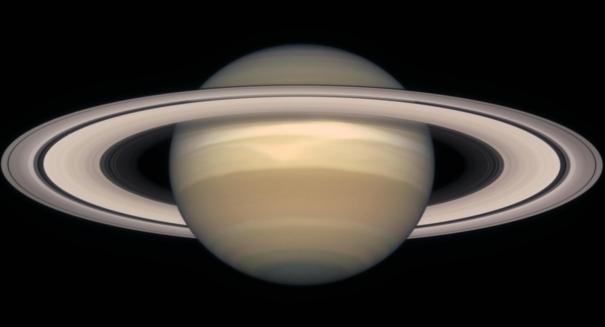
Did you know there's an invisible ring in this picture? Scientists now estimate it's twice as large as they previously thought.
Saturn’s Phoebe ring — completely invisible to the human eye — is twice the thickness that scientists had once believed, a new study has found.
It’s also Saturn’s biggest ring, and it is made almost entirely of tiny particles and could help scientists understand how Saturn’s ring system evolved, according to a Los Angeles Times report. The study was published in the journal Nature and was led by Douglas Hamilton, who is a planetary scientists at the University of Maryland.
As big as the rings are around Saturn that we can see, this ring dwarfs them are — an estimated 10 to 20 times the size of the second largest ring.
The rings make a nice disc for the planet, creating the appearance that makes Saturn famous. But NASA’s Spitzer Space Telescope in 2009 detected another ring, a massive one that even the planet itself is nothing more than a dot in the middle.
It’s tough to spot the ring with visible light, although NASA’s Cassini spacecraft was able to do so. But in infrared wavelengths, you can see what has been described as a ghostly halo.
It was the weird two-tone color of Saturn’s moon Iapetus that first tipped off Hamilton and his colleagues. They realized that the reason one side of the moon and the other side is dark is because invisible particles were striking Iapetus and causing one side to blacken. This is visible on Iapetus because it is tidally locked with Saturn and can’t rotate to spread the “soot” out evenly.
Scientists initially thought the ring was between 4.8 million and 7.76 million miles in thickness, but Spitzer has a pretty narrow field of view that makes it difficult to say.
Using NASA’s Wide-field Infrared Survey Explorer telescope, they were able to get a better estimate indicating that it is between 3.75 and 10.1 million miles.
Nearly all the particles within the ring are tiny, with 90 percent of them no bigger than a soccer ball, according to the report.
This new ring could help scientists learn more about Saturn and its system of rings and moons.